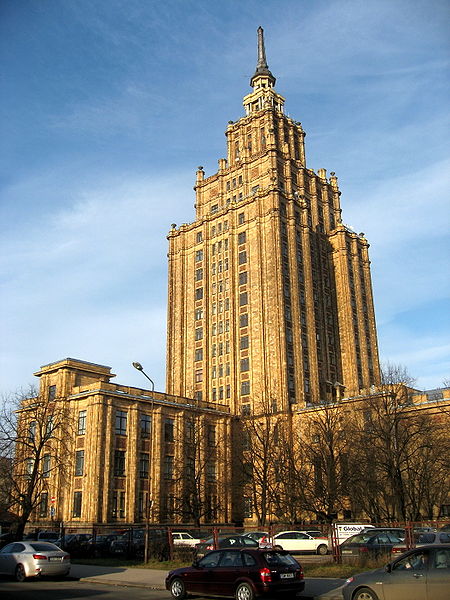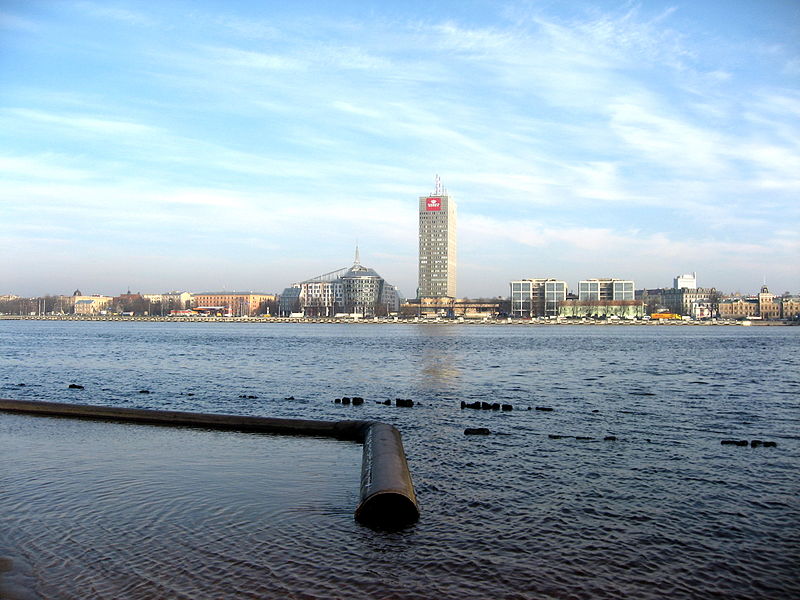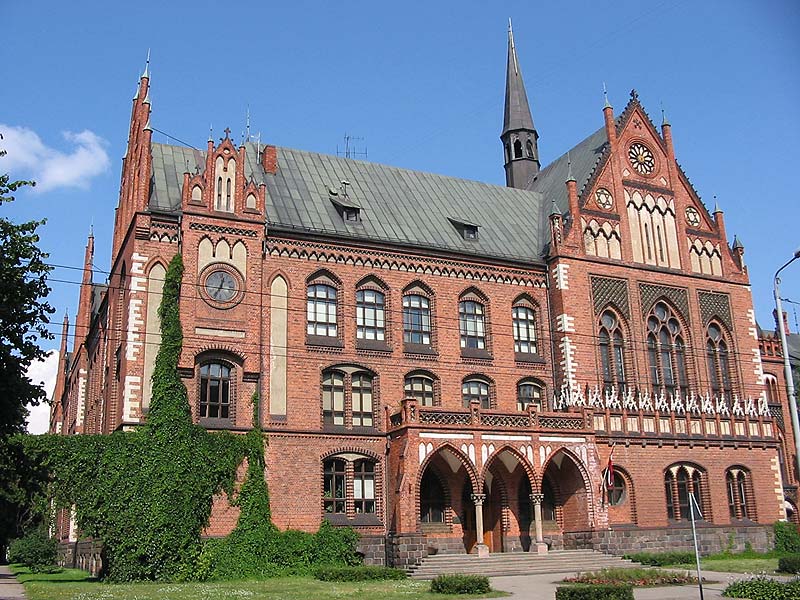<Back to Index>
- Riga Region, Latvia Riga, 703K
PAGE SPONSOR

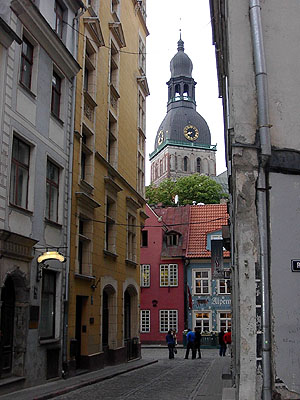
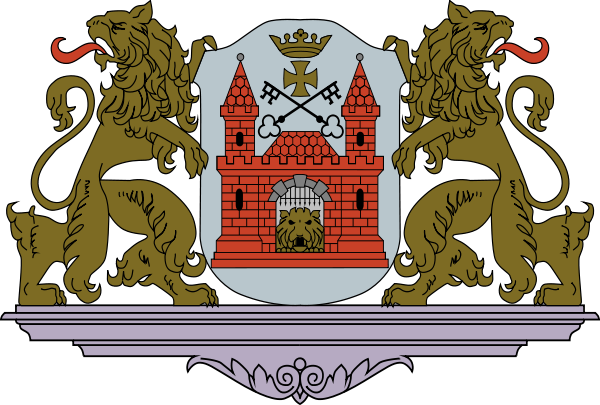
Riga (Latvian: Rīga) is the capital and largest city of Latvia. With 702,891 inhabitants (July 2011) Riga is the largest city of the Baltic states, one of the largest cities in Northern Europe and home to more than one third of Latvia's population. The city is an important seaport and a major industrial, commercial, cultural and financial center of the Baltic Sea region. The city lies on the Gulf of Riga, at the mouth of the river Daugava. Riga's territory covers 307.17 km2 (118.60 sq mi) and lies between 1 and 10 meters (3.3 and 33 ft) above sea level, on a flat and sandy plain.
Riga was founded in 1201 and is a former Hanseatic League member. Riga's historical center is a UNESCO World Heritage Site, noted for its Art Nouveau / Jugendstil architecture and 19th century wooden architecture. The city will be the European Capital of Culture in 2014, along with Umeå in Sweden. The city hosted the 2006 NATO Summit, the Eurovision Song Contest 2003 and the 2006 IIHF Men's World Ice Hockey Championships. It is home to the European Union's office of European Regulators for Electronic Communications (BEREC). Riga is served by Riga International Airport, the largest airport in the Baltic states.
Riga is a member of Eurocities, the Union of the Baltic Cities (UBC) and Union of Capitals of the European Union (UCEU). Riga is considered a global city.
One theory for the origin of the name Riga is that it is a corrupted borrowing from the Liv ringa meaning loop, referring to the ancient natural harbor formed by the tributary loop of the Daugava. The other is that Riga owes its name to this already established role in commerce between East and West, as a borrowing of the Latvian rija, for threshing barn, the "j" becoming a "g" in German — notably, Riga is called Rie by English geographer Richard Hakluyt (1589), and German historian Dionysius Fabricius (1610) confirms the origin of Riga from rija. Another theory could be that Riga was named after Riege, the German name for the River Rīdzene, a tributary of the Daugava.
The river Daugava has been a trade route since antiquity, part of the Vikings' Dvina - Dnieper navigation route to Byzantium. A sheltered natural harbor 15 km (9.3 mi) upriver from the mouth of the Daugava — the site of today's Riga — has been recorded, as Duna Urbs, as early as the 2nd century. It was settled by the Livs, an ancient Finnic tribe.
Riga began to develop as a center of Viking trade during the early Middle Ages. Riga's inhabitants occupied themselves mainly with fishing, animal husbandry, and trading, later developing crafts (in bone, wood, amber, and iron).
The Chronicle of Henry of Livonia testifies to Riga having long been a trading center by the 12th century, referring to it as portus antiquus (ancient port), and describes dwellings and warehouses used to store mostly corn, flax, and hides. German traders began visiting Riga, establishing a nearby outpost in 1158.
Along with German traders also arrived the monk Meinhard of Segeberg to convert the pagans to Christianity. (Catholic and Orthodox Christianity had already arrived in Latvia more than a century earlier, and many Latvians baptized) Meinhard settled among the Livs, building a castle and church at Ikšķile, upstream from Riga, and established his bishopric there. The Livs, however, continued to practice paganism and Meinhard died in Ikšķile in 1196, having failed his mission. In 1198 the Bishop Bertold arrived with a contingent of crusaders and commenced a campaign of forced Christianization. Bertold was killed soon afterwards and his forces defeated.
The Church mobilized to avenge. Pope Innocent III issued a bull declaring a crusade against the Livonians. Bishop Albert was proclaimed Bishop of Livonia by his uncle Hartwig of Uthlede, Prince - Archbishop of Bremen and Hamburg in 1199. Albert landed in Riga in 1200 with 23 ships and 500 Westphalian crusaders. In
1201 he transferred the seat of the Livonian bishopric from Ikšķile to
Riga, extorting agreement to do so from the elders of Riga by force.
1201 also marked the first arrival of German merchants in Novgorod, via the Dvina. To defend territory and trade, Albert established the Order of Livonian Brothers of the Sword in 1202, open to nobles and merchants.
Christianization of the Livs continued. 1207 marked Albert's start on fortification of the town. Emperor Philip's invested Albert with Livonia as a fief and principality of the Holy Roman Empire. To promote a permanent military presence, territorial ownership was divided between the Church and the Order, with the Church taking Riga and two thirds of all lands conquered and granting the Order a third. Until then, it had been customary for crusaders to serve for a year and then return home.
Albert had ensured Riga's commercial future by obtaining papal bulls which decreed that all German merchants had to carry on their Baltic trade through Riga. In 1211, Riga minted its first coinage, and Albert laid the cornerstone for the Riga Dom. Riga was not yet secure as an alliance of tribes failed to take Riga. In 1212, Albert led a campaign to compel Polotsk to grant German merchants free river passage. Polotsk conceded Kukenois (Koknese) and Jersika to Albert, also ending the Livs' tribute to Polotsk.
Riga's merchant citizenry chafed and sought greater autonomy from the Church. In 1221 they acquired the right to independently self - administer Riga. and adopted a city constitution.
That same year Albert was compelled to recognize Danish rule over lands they had conquered in Estonia and Livonia. Albert had sought the aid of King Valdemar of Denmark to protect Riga and Livonian lands against Liv insurrection when reinforcements could not reach Riga. The Danes landed in Livonia, built a fortress at Reval (Tallinn), and set about conquering Estonian and Livonian lands. The Germans attempted, but failed, to assassinate Valdemar. Albert was able to reach an accommodation a year later, however, and in 1222 Valdemar returned all Livonian lands and possessions to Albert's control.
Albert's difficulties with Riga's citizenry continued; with papal intervention, a settlement was reached in 1225 whereby they no longer had to pay tax to the Bishop of Riga, and Riga's citizens acquired the right to elect their magistrates and town councilors. In 1226, Albert consecrated the Dom Cathedral, built St. James's Church, and founding a parochial school at the Church of St. George.
In 1227, Albert conquered Oesel and the city of Riga concluded a treaty with the Principality of Smolensk giving Polotsk to Riga.
Albert died in January 1229. He failed his aspiration to be anointed archbishop but the German hegemony he established over the Baltics would last for seven centuries.
In 1282 Riga became a member of the Hanseatic League.
The Hansa was instrumental in giving Riga economic and political
stability, thus providing the city with a strong foundation which
endured the political conflagrations that were to come, down to modern
times.
As the influence of the Hansa waned, Riga became the object of foreign military, political, religious and economic aspirations. Riga accepted the Reformation in 1522, ending the power of the archbishops. In 1524, a venerated statue of the Virgin Mary in the Cathedral was denounced as a witch, and given a trial by water in the Daugava River. The statue floated, so it was denounced as a witch and burnt at Kubsberg. With the demise of the Livonian Order during the Livonian War, Riga for twenty years had the status of a Free Imperial City of the Holy Roman Empire before it came under the influence of the Polish – Lithuanian Commonwealth by the Treaty of Drohiczyn, which ended the war for Riga in 1581. In 1621, during the Polish – Swedish War (1621 – 1625), Riga and the outlying fortress of Daugavgriva came under the rule of Gustavus Adolphus, King of Sweden, who intervened in the Thirty Years' War not only for political and economic gain but also in favor of German Lutheran Protestantism. During the Russo - Swedish War (1656 – 1658), Riga withstood a siege by Russian forces.
Riga remained the largest city in Sweden until 1710, a period during which the city retained a great deal of autonomous self - government. In that year, in the course of the Great Northern War, Russia under Tsar Peter the Great besieged Riga. Along with the other Livonian towns and gentry, Riga capitulated to Russia, but largely retained their privileges. Riga was made the capital of the Governorate of Riga (later: Livonia). Sweden's northern dominance had ended, and Russia's emergence as the strongest Northern power was formalized through the Treaty of Nystad in 1721. Peter the Great was a big fan of Riga. He married Latvian Martha Skavronskaya, after his death known as Empress Ekaterina I. Having received a palace as a gift from the municipality of Riga (although he insisted on paying), Peter used to visit Riga regularly. He helped to rebuild the tallest church in Riga (St.Peter's church) after it was burned down, and created a general plan for Riga's development, including planning many parks and boulevards, and planting some trees himself. Riga became an industrialized port city of the Russian empire, in which it remained until World War I. By 1900, Riga was the third largest city in Russia after Moscow and Saint Petersburg in terms of the number of industrial workers and number of theaters.
During these many centuries of war and changes of power in the Baltic, and despite demographic changes, the Baltic Germans in Riga had maintained a dominant position. By 1867 Riga's population was 42.9% German. Riga employed German as its official language of administration until the installation of Russian in 1891 as the official language in the Baltic provinces, as part of the policy of Russification of the non - Russian speaking territories of the Russian Empire, including Congress Poland, Finland and the Baltics, undertaken by Tsar Alexander III. More and more Latvians started moving to the city during the mid 19th century. The rise of a Latvian bourgeoisie made Riga a center of the Latvian National Awakening with the founding of the Riga Latvian Association in 1868 and the organization of the first national song festival in 1873. The nationalist movement of the Young Latvians was followed by the socialist New Current during the city's rapid industrialization, culminating in the 1905 Revolution led by the Latvian Social Democratic Workers' Party.
The 20th century brought World War I and the impact of the Russian Revolution of 1917 to Riga. The German army marched into Riga on 3 September 1917. On 3 March 1918 the Treaty of Brest - Litovsk was signed, giving the Baltic countries to Germany. Because of the Armistice with Germany of 11 November 1918, Germany had to renounce that treaty, as did Russia, leaving Latvia and the other Baltic States in a position to claim independence. Latvia, with Riga as its capital city, thus declared its independence on November 18, 1918.
Between World War I and World War II (1918 – 1940), Riga and Latvia shifted their focus from Russia to the countries of Western Europe. The United Kingdom and Germany replaced Russia as Latvia's major trade partners.
During World War II, Latvia was occupied first by the Soviet Union in June 1940 and then by Nazi Germany in 1941 – 1944. The Baltic Germans were forcibly repatriated to Germany. The city's Jewish community was forced into the Riga Ghetto and concentration camps were constructed in Kaiserwald and the city of Salaspils.
In October 1944 Latvia was once again occupied by the Red Army. As a result of the war Latvia lost approximately one - third of its population. Industrialization and growth of infrastructure led to many people from other parts of
Soviet Union moving to Riga, and most of those people were not of
Latvian ethnicity. In effect, as a Latvian city it never really had a
majority Latvian population other than a short 20 year long period
between wars.
The policy of economic reform, introduced in 1986 as Perestroika, led to dissolution of the Soviet Union and restoration of independent Latvia in 1991. Latvia formally joined the United Nations as an independent country on 17 September 1991. In 2004 Latvia joined both NATO and the European Union.
In 2004, the arrival of low cost airlines resulted in cheaper flights from other European cities such as London and Berlin and consequently a substantial increase in numbers of tourists.
Riga administrative divisions consists of six administrative entities: Central, Kurzeme and Northern Districts and the Latgale, Vidzeme and Zemgale Suburbs. Three entities were established 1 September 1941, and other three were established October 1969. There are no official lower level administrative units, but the Riga City Council Development Agency is working on a plan, which when officially confirmed will make Riga consist of 58 neighbourhoods. The current names were confirmed on 28 December 1990.
The climate of Riga is humid continental (Koppen Dfb). The coldest months are January and February, when the average temperature is −5 °C (23 °F) but temperatures as low as −20 °C (−4 °F) to −25 °C (−13 °F)
can be observed almost every year on the coldest days. The proximity of
the sea causes frequent autumn rains and fogs. Continuous snow cover
may last eighty days. The summers in Riga are warm and humid with the
average temperature of 18 °C (64 °F), while the temperature on the hottest days can exceed 30 °C (86 °F).
Business and leisure travel to Riga have increased significantly in recent years because of improved infrastructure. Most tourists travel to Riga by air via Riga International Airport, the largest airport in the Baltic states, which was renovated and modernized in 2001 on the occasion of Riga's 800th anniversary. In the near future, the face of Riga will undergo notable changes. The construction of a new landmark — the Latvian National Library building — began in the autumn of 2007 and was due to be completed by 2010. Currently discussions are underway in Riga council about the development of the central areas on the left bank of the Daugava. The major dispute surrounds plans to build skyscrapers in Ķīpsala, which UNESCO warned "could seriously endanger the status of the Historic Center of Riga as a World Heritage Site." The construction of 3 buildings in Ķīpsala has already started — the Da Vinci complex (25 floors) and two high-rises called Z-Towers (30 floors). Almost all important Latvian financial institutions are located in Riga, including the Bank of Latvia, which is Latvia's central bank. Foreign commercial trade through Riga has been on the increase in recent years and received new impetus on May 1, 2004 when Latvia became a member of the European Union. Riga accounts for about half of the total industrial output of Latvia, focusing on the financial sector, public utilities, food and beverages, pharmaceuticals, wood processing, printing and publishing, textiles and furniture, and communications equipment manufacturing. More than 50% of Latvian companies are registered in Riga region. The port of Riga is an important cargo shipping center. It is the main all-weather port in the Baltic and is expected to grow in the next few years because of increased trade with other ex-Soviet states and the People's Republic of China.
Air Baltic, the national airline of Latvia, has its head office on the grounds of Riga International Airport in Riga. RAF - Avia has its head office in Riga.
Riga, with its central geographic position and concentration of population, has always been the infrastructural hub of Latvia. Several national roads begin in Riga, and European route E22 crosses Riga from the east and west, while the Via Baltica crosses Riga from the south and north.
As a city situated by a river, Riga also has several bridges. The oldest standing bridge is the Railway Bridge, which is also the only railroad carrying bridge in Riga. The Stone Bridge connects Old Riga and Pārdaugava; the Island Bridge connects Maskavas Forštate and Pārdaugava via Zaķusala; and the Shroud Bridge connects Old Riga and Pārdaugava via Ķīpsala. In 2008, the first stage of the new Southern Bridge route across the Daugava was completed, and was opened to traffic on November 17. The Southern Bridge is currently the biggest construction project in the Baltic states in 20 years, and it is to reduce traffic congestion in the city center. Another major construction project is the planned Riga Northern Transport Corridor, which is scheduled to commence in 2010.
The Freeport of Riga facilitates cargo and passenger traffic by sea. Sea ferries currently connect Riga to Stockholm and Lübeck, operated respectively by Tallink and DFDS Tor Line. The Latvian flagged ferries MS Romantika and MS Silja Festival are located in the Riga Passenger Terminal.
Riga has one active airport that serves commercial airlines — the Riga International Airport (RIX), built in 1973. Renovation and modernization of the airport was completed in 2001, coinciding with the 800th anniversary of the city. In 2006, a new terminal extension was opened. Work on an extension of the runway was completed in October 2008, and the airport is now able to accommodate large aircraft such as the Airbus A340, Boeing 747, 757, 767 and 777. The annual number of passengers has grown from 310,000 in 1993 to over 4 million in 2009. It has now become the largest airport in the Baltic States, and there are plans to construct a new terminal to cope with increasing passenger numbers.
Riga was also home to an air base during the Cold War — Rumbula Air Base. Another airport, the Spilve Airport, is a former civilian and military airport in Riga located 5 km (3.11 mi) from Riga city center, with active aircraft operating as early as the First World War. It became the first international airport of Riga in the 1930s, which, from 1937 linked the capital city with Helsinki via Tallinn, Warsaw via Vilnius, Berlin and Moscow via Kaunas. After World War II and the Soviet occupation, it was rebuilt into a 1950s era airport, the hub of Aeroflot. A new ring taxiway and restored surface was added. The airport was closed for regular flights in the late 1980s. The terminal building still remains as a notable example of Stalin's neoclassical architecture.
Public transportation in the city is provided by Rīgas Satiksme which operates a large number of trams, buses and trolley buses on an extensive network of routes across the city. In addition, many private owners operate minibus services. Riga is connected to the rest of Latvia by trains operated by the national railway company Passenger Train, whose headquarters are in Riga. There are also international rail links to Russia and Estonia. Riga International Coach Terminal provides domestic and international connections by coach. Current plans envisage a trans - European rail link from Tallinn to Warsaw via Riga financed by the European Union, with the first phase to be completed by 2013.
With 702,891 inhabitants in July 2011, Riga is the largest city in the Baltic States, though its population has decreased from just under 1 million in 1991. Notable causes include emigration and low birth rates. Some have estimated that the population may fall by as much as 50% by 2050. According to the January 2011 data, ethnic Latvians make up 42.4% of the population of Riga, with the percentage of ethnic Russians at 40.7%, Belarusians at 4.2%, Ukrainians at 3.8%, Poles at 2.0%, and other ethnicities at 6.9%. By comparison, 59.4% of Latvia's total population are ethnic Latvians, 27.6% are Russians, 3.6% are Belarusians, 2.5% are Ukrainians, 2.3% are Polish, 1.3% are Lithuanians and the remaining 3.3% are accounted for by other ethnicities (2010).
Historically, Riga has always been a melting pot of different ethnicities, including the Germans, Latvians, Jews and Russians, peacefully coexisting and creating a base for a flourishing economy. Upon the restoration of Latvia's independence in 1991, Soviet era immigrants (and any of their offspring born before 1991) were not automatically granted Latvian citizenship because they had migrated to the territory of Latvia during the years of the Soviet occupation. The proportion of ethnic Latvians in Riga has increased from 36.5% in 1989 to 42.4% in 2010. In contrast the percentage of Russians has fallen from 47.3% to 40.7% in the same time period. Latvians overtook Russians as the largest ethnic group in 2006.
In
2005, 16.2% of the population were living under the poverty line, and
the most vulnerable groups were children, young adults and senior
citizens.
The Latvian National Opera was founded in 1918. The repertoire of the theater embraces all opera masterpieces. The Latvian National Opera is famous not only for its operas, but for its ballet troupe as well. The Latvian National Theatre was founded in 1919. This theater is situated in one of the most beautiful buildings in Riga. The Latvian National Theatre preserves the traditions of Latvian drama school. It is one of the biggest theaters in Latvia. The Riga Russian Theatre is the oldest professional drama theater in Latvia, established in 1883. The repertoire of the theater includes classical plays and experimental performances of Russian and other foreign playwrights. The Daile Theatre was opened for the first time in 1920. It is one of the most successful theaters in Latvia. This theater is distinguished by its frequent productions of modern foreign plays. Latvian State Puppet Theatre was founded in 1944. This theater presents shows for children and adults. The New Riga Theatre was opened in 1992. It has an intelligent and attractive repertoire of high quality that focused on a modern, educated and socially active audience.
